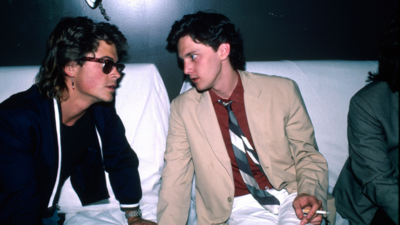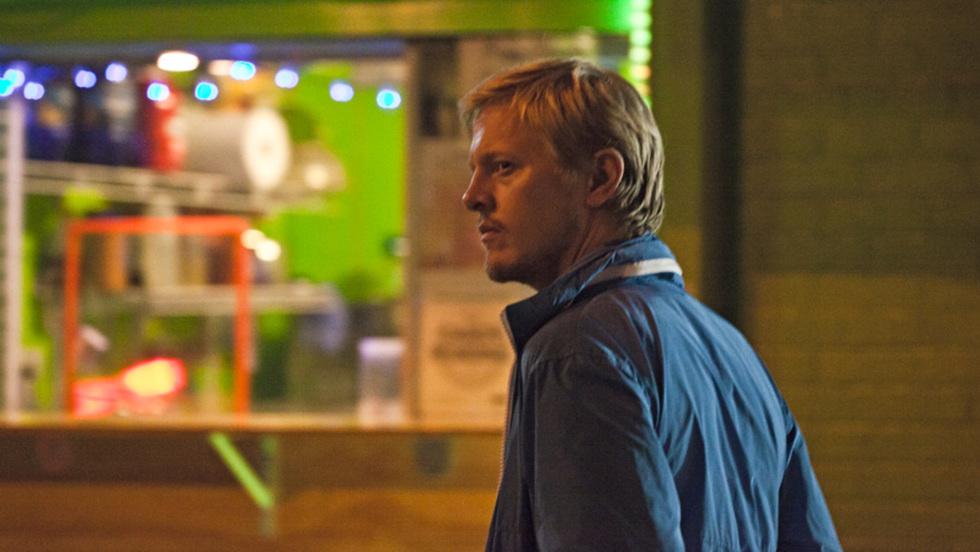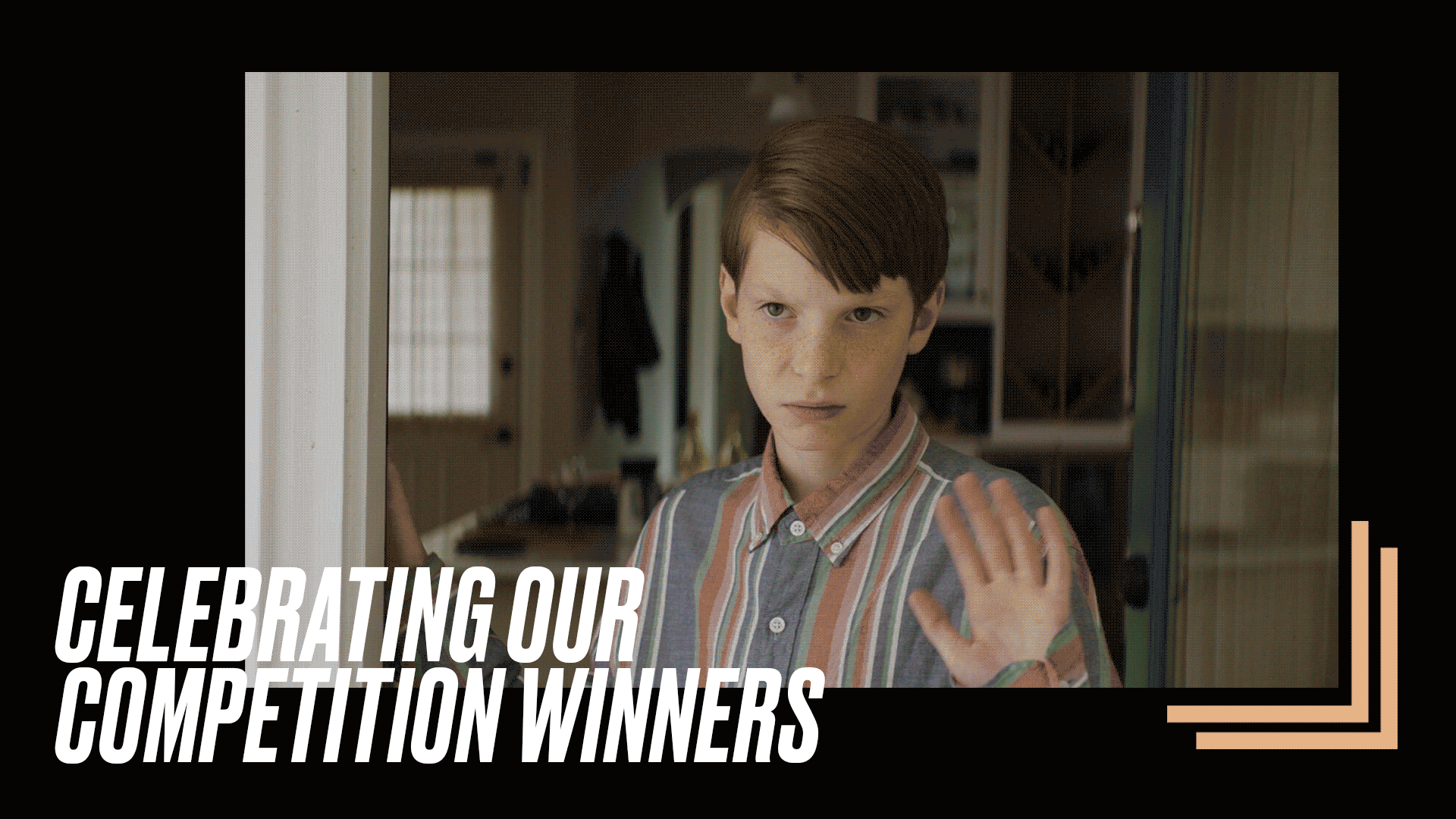
BY KRISTIN MC CRACKEN |
Ira Sachs on Sex, Culture, and Love in "Keep the Lights On"
Nominated for four Independent Spirit Awards, "Keep the Lights On" provides an intimate look at gay culture as director Ira Sachs mines his own experiences and love life. This touching and graphic portrait of a relationship re-opens in NYC this week at Cinema Village.

Keep the Lights On chronicles the emotional and sexually-charged relationship between two men in New York City over a decade. Documentary filmmaker Erik (Thure Lindhardt) meets a drug-addicted closeted lawyer (Zachary Booth in a dazzling performance) through a casual encounters hotline, and both are surprised by their instant connection. The two soon commit to a relationship that proves to consume theirlives bothn positively and negatively. The film explores the dark depths of drug addiction and obsession and brings the two men to a crucial point at which they must decide whether to stay together.
Nominated for four Independent Spirit Awards including Best Feature, Best Director, Best Screenplay and Best Male Lead (Thure Lindhardt), Keep the Lights On is returning to NYC this Friday December 21st at Cinema Village. Director Ira Sachs will be available for Q&As after the 7pm showings on both Friday and Saturday nights.
Note: This interview originally ran as part of our coverage of the 2012 Tribeca Film Festival.
Tribeca: Tell us a little about Keep the Lights On. How do you describe the movie in your own words?
Ira Sachs: Keep the Lights On is the story of a decade-long relationship between two men in New York City from the first day to the last. You could also say it’s a break-up movie, a story of addictions, a co-dependent romance, a roman-â-clef, an autobiography, and a movie about sex and love and friendship and the very particular world of artists and filmmakers and writers that I’ve been a part of for the last 25 years here in New York City.
Tribeca: As the director and co-writer, what inspired you to tell this story?
Ira Sachs: About 5 years ago, I saw a film called Before I Forget, by Jacques Nolot, at the Cinema Village, about a gay filmmaker in Paris and his world and his friends and his very particular way of talking, and having sex, and relationships, and friendships. I wanted to make a film as specifically about my own experiences and culture in New York—a film I’d never seen—and I wanted to make it as honestly, and without shame.
I had a few years before ended a very dramatic ten-year relationship, and on the last day, when we were walking for the last time down 8th Street between 5th and 6th Avenues, I knew that there had also been a very first day, a decade before. I wanted to make a film about what happened in between those two moments, from the first day to the last.
Tribeca: Why did you choose to make Eric a documentarian by profession? And his subject—Avery Willard—was a real-life artist; was this decision a way to kind of make two movies in one?
Ira Sachs: As soon as I decided to cast actors, and create a screenplay, Keep the Lights On already entered the realm of fiction. But I wanted to mine my own experiences closely, so I decided the lead would, like myself, be a filmmaker. Initially, Mauricio (Zacharias, my co-writer) and I thought the film-within-the-film was going to be the story of the famed dance club The Saint, but I found that there was so little visual material to work with that I needed to find another subject. My husband, Boris Torres (whose paintings are used in the opening titles of the film), suggested that I have the character make a film about something that was already of interest to me, and the next day, by coincidence, I happened to already have plans to go to the New York Public Library to investigate a lost trove of films by Avery Willard, a filmmaker and pornographer who had also published the post-Stonewall paper, Gay Scene. I run a film series, Queer/Art/Film, and we had gotten into restoring lost works, and I heard about Avery from the singer Antony Hegarty. So, the library visit was part of my “day job.” On the steps of the 42nd Street branch, I realized that life was imitating art, and that the character in my film could make the film on Avery that I was already beginning to make myself.
Tribeca: Thure Lindhardt is in two movies at Tribeca this year (the other is Eddie the Sleepwalking Cannibal), and I always think Paprika Steen is a delight. Really, I just loved your whole cast. What can you tell us about the casting process?
Ira Sachs: There’s something about non-American actors that has always been appealing to me. There’s a different style of acting, and it’s a little more casual, a little more realistic, maybe. In my film Forty Shades of Blue, I worked with a great Russian actress, Dina Korzun, as well as Paprika Steen. In my first feature, The Delta, I cast a Vietnamese non-professional, Thang Chan. So, when we were casting the role of Eric, and we needed to find someone who would be naked in all sorts of ways, physically and emotionally, I found it wasn’t easy to find an American actor willing to go as far as the role demanded. The homosexuality added an extra element. I would go to major agencies with the script and they would tell me no one—not one actor—was available.
A Scandinavian screenwriter friend, Soren Frellesen, told me about Thure—he called him “the most fearless and also one of the best actors in Denmark”—so I sent Thure the script while he was on set in Spain. In his hotel room, he filmed himself doing a couple of short scenes from the film, one involving masturbation, among other things. I watched them the next day online and cast him immediately. I had already met and cast Zach Booth, and knew we had a great pair.

Tribeca: The whole movie felt like a novel to me, which I totally mean as a compliment. The story was so layered, and the characters were so developed, and so quickly, which is not an easy thing to do on film. How did you work with your actors to create the rich characters?
Ira Sachs: Luckily, I had a great collaborator, my co-writer Mauricio Zacharias, who was able to work with me on turning 100s of pages of journals, and emails, and letters, full of all the details and the chronology of my relationship over 10 years, into something that worked as a story. First the screenplay, and then the film, needed to satisfy all the demands—and find the unity—of a good narrative, and that was a long process of adding and subtracting from life, and from the imagination.
With actors, I don’t rehearse with them at all—we talk a lot individually, but I never have them read lines with another actor before we start to shoot. Every fiction film is also a documentary, and I try to keep the reality as much of a surprise to the actors as it is to myself. The script, however, has already done a lot of the heavy lifting. The actors can trust the story is there, and they just need to live it.
Tribeca: There was such a graphic intimacy to Keep the Lights On—both sexual and emotional. Were there any challenges to filming the intimate scenes?
Ira Sachs: Antonio Campos and Brady Corbet had shot their film Simon Killer not too long before we shot Keep the Lights On, and they had both given me some pointers on shooting sex. Their first tip was to cover private parts with tough Velcro, so there’s no fear of anything going where you don’t want it to, and their second was to shoot the sex early on. It was a great suggestion, and we shot the first graphic sex scene in the film on the second day of shooting. The actors were both extremely comfortable with their own bodies, and each other—more than me, I would say—and they took us as a crew somewhere where sex seemed easy, and funny, and something one could act for the camera.
Tribeca: What's the craziest thing (or "lightning strikes" moment) that happened during production?
Ira Sachs: Every day is a lightning strikes moment, to be honest, because if it’s not, you’re in trouble. The hardest scenes to shoot are the simplest ones. The easiest are the more dramatic. I kept a long journal of production that talks a lot about the ups and downs of the process—the day we had a scratch on the negative, the night we shot our first sex scene, etc, etc.—and I have put it all online here.

Tribeca: You’ve made several films. Was there one particular lesson you learned on Keep the Lights On you can share with any aspiring filmmakers looking to get their own film off the ground?
Ira Sachs: Don’t get bogged down in a “development” process, whether that means writing 100 drafts, or waiting 5 years before you get the right actor, or financing from a dreamed-of production company. Given the state of indie financing, we’re back at a point that the only thing to do is Pick A Date, and make your movie. If that means you have to change your script to adapt to the $10,000 you think you can raise on Kickstarter, or that you saved from your Bar Mitzvah money, then adapt your script appropriately. There’s no waiting around any more: for most of us that money just isn’t there. And if you set yourself a date for production, you are also putting a fire under yourself, and you start acting differently. You become more active, more decisive, and, maybe most important, more convincing to others you need to get on the train with you.
Tribeca: What are you most looking forward to at Tribeca? What do you want audiences to take away from the film?
Ira Sachs: Keep the Lights On is a very New York movie, and I am excited to see it for the first time with a New York audience. I think this is a world, and a story, people all over the world can relate to, but the details are of and about New York. Gay New York, arty New York, Downtown New York, 90s New York, early 2000s New York. We tried to capture a bit of all of that.
Tribeca: If you could have dinner with any filmmaker (alive or dead), who would it be?
Ira Sachs: I would love to have dinner with the French filmmaker Jacques Nolot. His film Before I Forget inspired this movie, and I would like to thank him. I hope he speaks English.
Tribeca: What’s your favorite New York movie?
Ira Sachs: News From Home, by Chantal Akerman. No other movie I can think of gets as well the feeling of being young and alone in this city.
Tribeca: What would your biopic be called?
Ira Sachs: Keep the Lights On.
Tribeca: What makes Keep the Lights On a must-see?
Ira Sachs: You’ll have to see it first to know.
Catch Keep the Lights On in NYC this Friday December 21st at Cinema Village. Director Ira Sachs will be available for Q&As after the 7pm showings on both Friday and Saturday nights.

Ira Sachs is the director of the features Married Life, The Delta, and the 2005 Sundance Grand Jury Prize winner Forty Shades of Blue. His short film Last Address is in the permanent collections of the Whitney Museum and MoMA. Sachs teaches film at NYU and founded Queer/Art/Mentorship.

